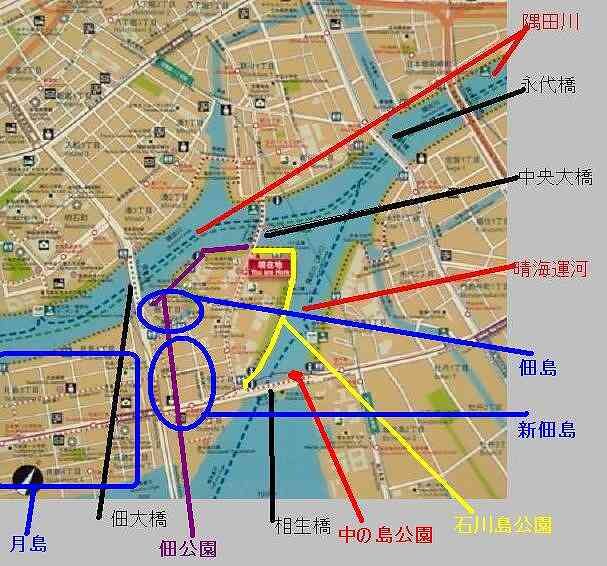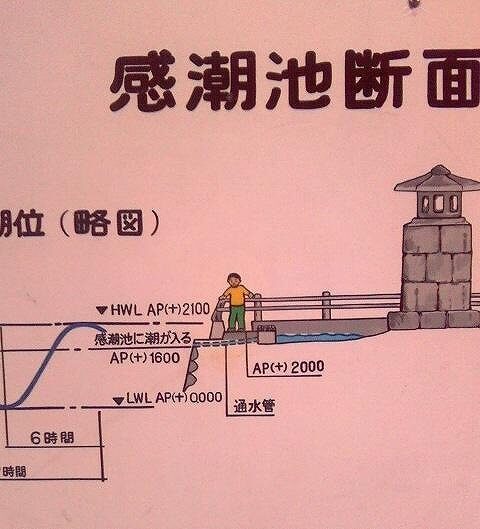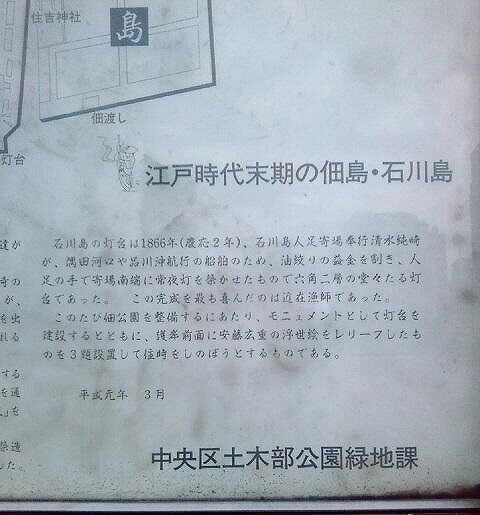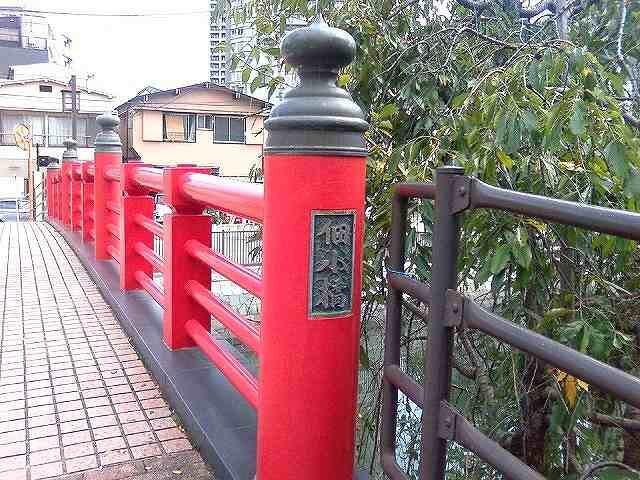Tsukudo-jima and Tsukishima are now one, but Tsukudo-jima itself was an island that was originally an island that was reclaimed and expanded.
Tsukushima, on the other hand, is a populated island that was created as a result of dredging work that began in 1887, and the resulting large amount of sand and soil that had to be disposed of.
Map of the Tsukudukushima and Tsukishima neighborhoods
This is a signboard in Ishikawajima Park on Tsukuda Island that explains the location of bridges, rivers, parks, etc. 
Tsukuda Island
The name Tsukudo-jima comes from the Edo shogunate.
It was called Tsukudo-jima because it was the island where 33 fishermen from Tsukuda-mura in Nishinari-gun, Settsu Province (near today’s Nishiyodogawa Ward in Osaka City) lived with their master, Mori Magoemon, who went to Edo to catch fish to be presented to the shogun.
There is a theory that Tokugawa Ieyasu, who went to the village of Tsukuda in Settsu Province’s Nishinari County, liked the fish stew that was preserved by the fishermen, and had a group of people move to Tsukuda Island to make Tsukudani.
The Mito clan founded the Ishikawajima Shipyard on Tsukuda Island at the end of the Edo period (1603-1868), and after the shipyard was relocated, it became Ishikawajima Heavy Industries, Ltd. and then Ishikawajima Harima Heavy Industries, Ltd.
Tsukudo-jima is thus an oasis in Tokyo, a sightseeing spot where history and modernity intersect and create a mysterious atmosphere.
Tsukishima
Tsukishima was created to dispose of the sediment that had accumulated on the bottom of the Sumida River, which was interfering with the operation of ships. Tsukishima was completed in 1892, Kachidoki in 1894, Shin Tsukuda Island around Tsukuda 2-chome in Chuo-ku in 1894, and Toyokai-cho in 1963.
Tsukishima did not exist in the Edo Period; it was a populated island created by the “Tokyo Bay Mio Dredge Project” in 1892.
The current Tsukishima 1-chome to Tsukishima 4-chome are Tsukishima 1, Tsukishima 2 and 3 are Kachidoki, and Tsukishima 4 is Harumi.
The origin of the name Tsukishima is said to come from a moon-viewing spot called “Tsuki no Misaki” by Ieyasu Tokugawa in the Edo period (1603-1868).
The cape of the moon is now a hill around Mita 4-chome, but it was a cape in the Edo period. If you look at a map of Tokyo Bay, you can see the reclaimed land.






